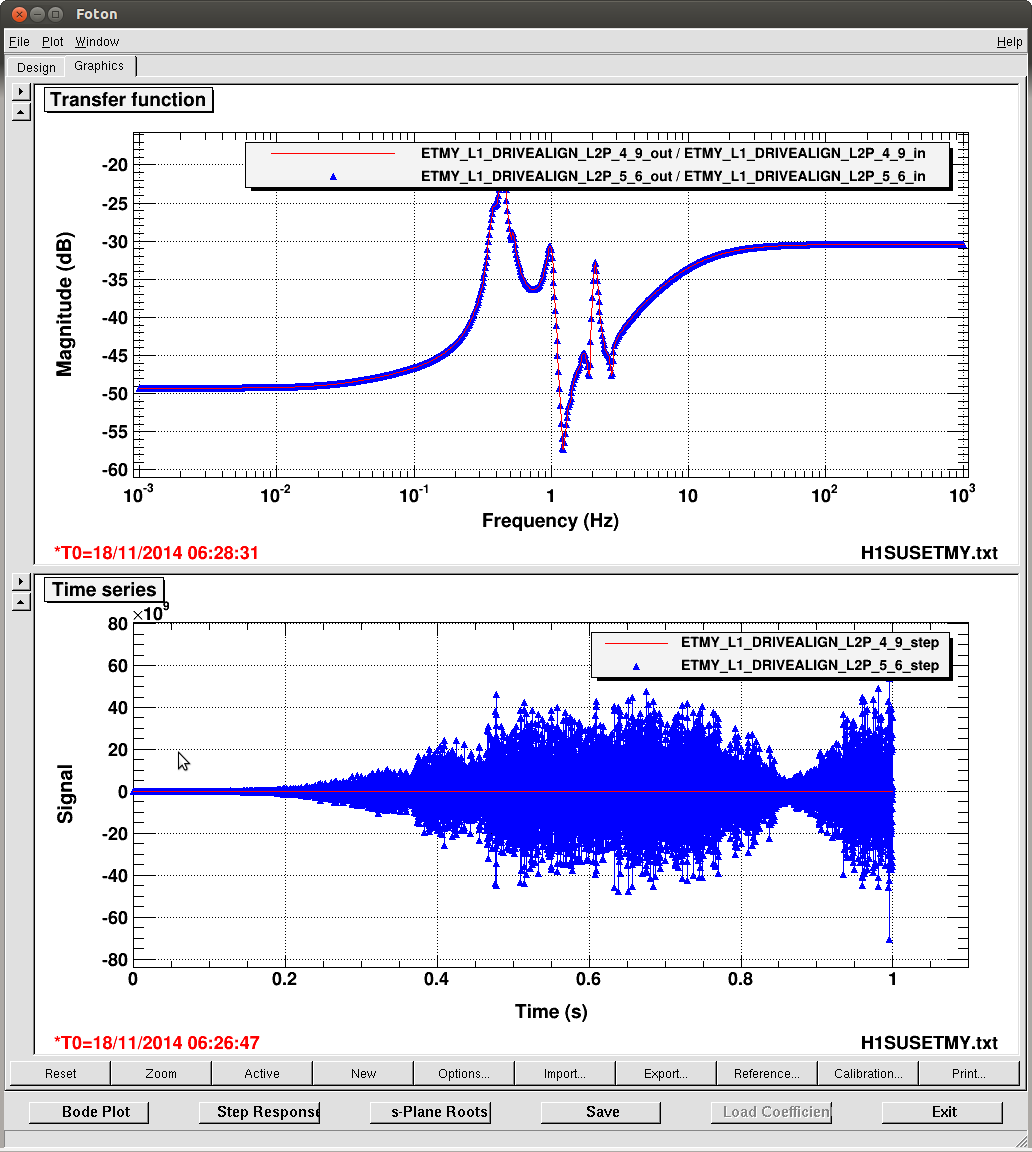Looked like commissioners were still working on the alignments so I held off on doing similar to WHAM3. So, I went to the ITMY which also needed some matrices corrections. These corrections required new controllers so I just went with Hugo's standard controllers and some mods to those, see 15112.
I brought down the HEPI at ~0805pst, the ISI watchdogs tripped very soon after. About 0813 I loaded the new matrices and attempted to restart the HEPI after adjusting the X dof Target Location. The RZ loaction did not change as the matrix errors I'm correcting are amplitudes in X & Y and the output matrix which was all 1s. Did you notice I forgot to mention loading the new controllers (required with changed matrices?) Well I did forget them, so then I prepared and loaded the new controllers and tried again. Okay, not so good...the vertical dofs are tripping quickly when the boosts turn on. Well, if you remember from my yesterday's alog, I elected to leave the vertical controllers at 5hz UGF. So I lowered them to 2hz like all the horizontals (I hadn't actually tried the horizontals yet, but I later did and they were fine.) Still the verticals blow up quickly when the boost is engaged. So, I continued and reduced the zero of the boost from 1.0 to 0.7hz as I did with the horizontal dofs. But, still no luck so I lowered them to 0.5hz and again no good. Alright, I tried the horizontals and they worked, I did the verticals manually and they are fine without the boosts.
Next I set up to do an open loop, this would reveal if my controller's matrices did not match my installed matrices. Well, the boosts would not engage at all for Z RY or VP! We attempted all sorts of things like resaving the file from foton, confirming the turn on method, comparing the boosts, putting the boost in another module (where it did turn on.) Finally, restarted the model, and HEPI isolated first attempt (3 hours later!)
So, the new matrices and new controllers work--why did these filter modules stop engaging properly and sending some wacko spike into the output--they would not have done any harm if they actually weren't doing anything? I thought about reverting the controllers back to where I started to see if at first it was actually my boosts but the the shape changes were actually quite minor: the gain peaking dropped from less than 3 to less than 2, and phase margin went from ~30 to ~50 degrees. Too little time so I didn't change them back. So unless my controllers were very bad to start and the repeated loading of fotons and tripping the watchdogs did something, the first attempt with the non-updated controllers must have done something to the filter module/model, or, it was a problem waiting to happen.
I noticed that the Guardian was restoring the RX & RY Target Location. I'm confused with that. I thought we were only restoring RZ everywhere, with Pitch at the ends, and X on ITMY (initial alignment.) I'll research the history and maybe I'll learn something but again, I did not think we were restoring these. It might make sense to do so as these are the tilting of the platforms but that is another issue.
I'll put an updated image of the controllers in shortly.
Updated safe.snap and latest foton file filed in the svn.
















